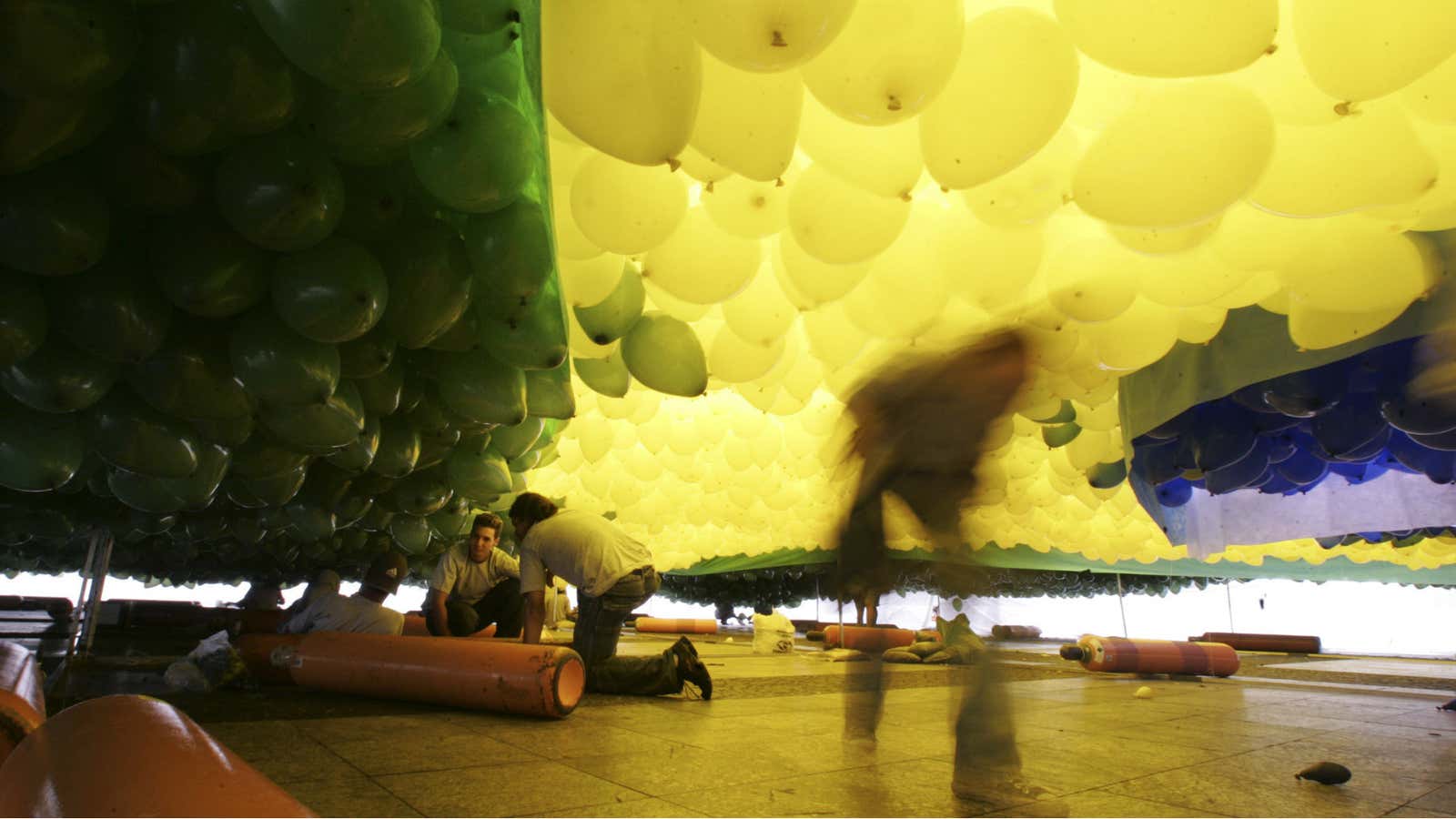Brazil’s economy continues to deteriorate.
The country’s statistics department just released its latest batch of inflation numbers (link in Portuguese). The data show prices increased 10.3% in November from the same time a year earlier, the fastest pace since 2003 and also the first reading above 10% since that time.
The last time inflation was this bad was when the leftist former president Luiz Ignácio Lula da Silva was expected to be elected, prompting foreign investors to pull their money out of the economy, which depressed the currency, according to a 2005 paper on the financial shocks Brazil faced at the time, written by two staff members from the Brazil’s Central Bank (pdf).
This time, the political crisis of the day is the ongoing corruption scandal involving Petrobras, a state-owned oil company.
On top of that, Brazil—like other emerging market nations—is suffering in part due a commodities glut partly tied to an ongoing economic slowdown in China. That’s hurting prices for Brazil’s economically important commodities exports such as iron ore and soybeans.
All that is to say the real is again depreciating again, and quickly:
And that decline in the real, is what’s driving inflation sharply higher. What will it take for things to get back to normal? Capital Economics suggested in a note to clients that food prices, which are increasing faster than most other things, should settle down when this year’s historically intense El Niño weather pattern stops wreaking havoc on crop production. But besides that, the picture is pretty murky. Per a Barclays note from late last week:
The outlook for LatAm remains the most difficult, as commodity weakness continues to weigh on the region’s economies. In Brazil, the negative feedback-loop between political uncertainty, unfavorable debt-dynamics and economic performance adds to the problems.
